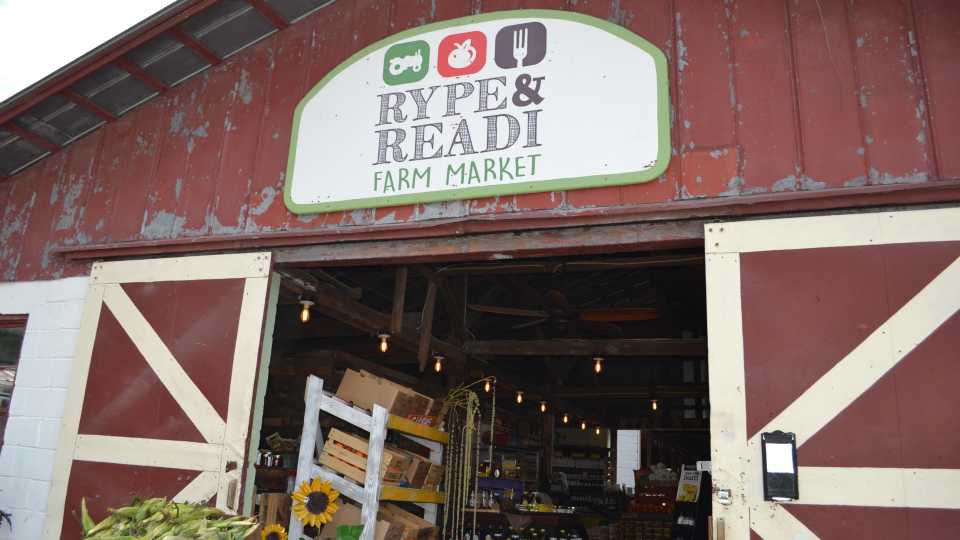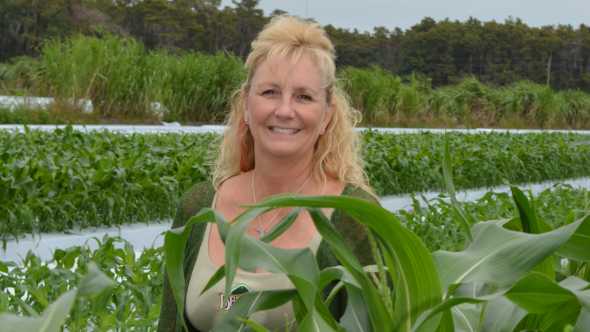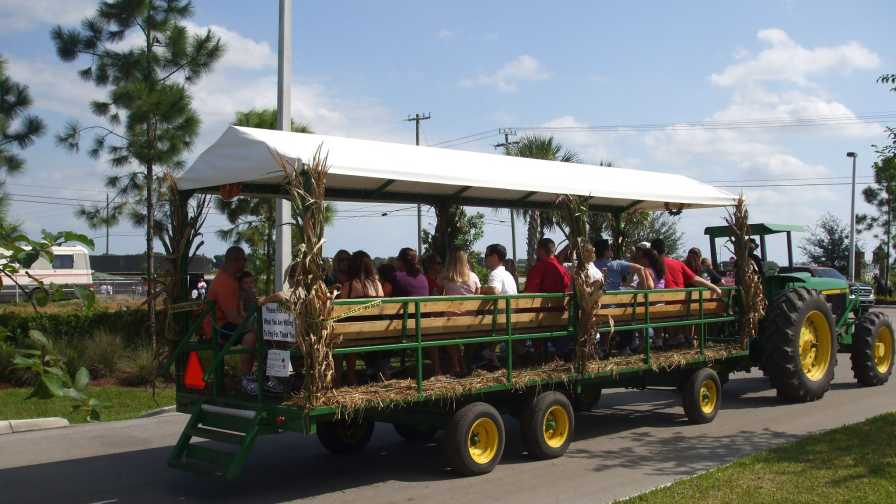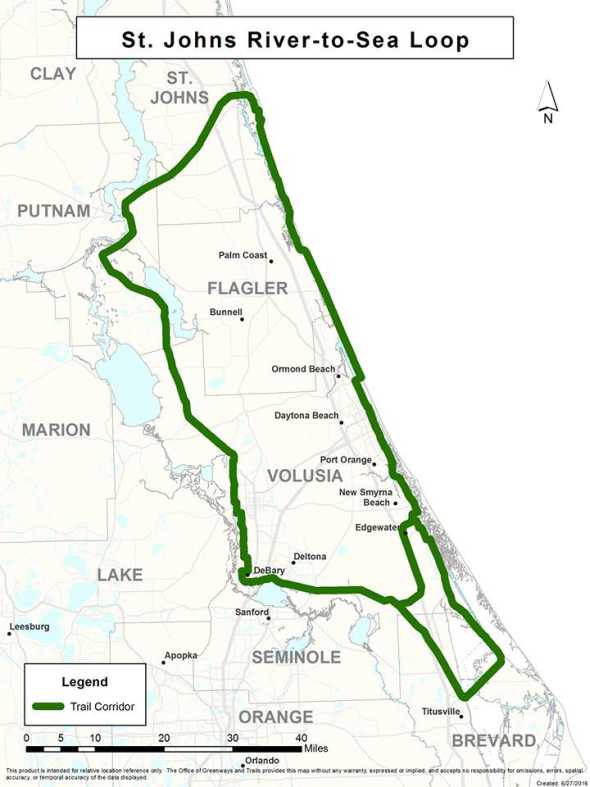How Florida Growers Are Agritaining and Gaining
Nearly 113 million people! That mind-blowing figure represents the number of tourists the Sunshine State welcomed last year, according to statistics from Visit Florida. Not an anomaly, the number marked the sixth consecutive record-breaking year in that regard.
So, where are all those people going? Many, of course, flock to the beaches. Droves drive to Disney. And yes, a fair share visit farms. A lot of you are aware of that fact. According to the latest USDA Census of Agriculture data, more than 700 farming operations in Florida offer some kind of agritainment. The segment continues to surge and evolve as new waves of opportunity come knocking at the door each and every year.
While the concept of Agritourism is not new, how farm operations benefit varies. There are ongoing farm management problems that Agritourism can help address, suggests Derek Farnsworth, a UF/IFAS Food & Resource Economics Researcher. Regarding trends in Agritourism, Farnsworth says he’s spoken to a number of growers who share a common success story. “Rising labor costs have made U-Pick operations especially appealing,” Farnsworth says. “It cuts out the middle man and saves on labor expenses.”
While saving on labor is reason enough to consider adding a U-Pick, most farms still employ agritainment for the extra income.

Fun fact: The popular corn maze attraction at Sykes and Cooper Farms in Elkton, FL, isn’t actually corn. According to the farm, sorghum is used for its durability.
Photo courtesy of Sykes and Cooper Farms
Strength in Numbers
When it comes to Agritourism making a true impact for local growers, the Tri-County Agricultural Area (TCAA) is a standout in the state — and for good reason, says Bonnie C. Wells, Doctor of Plant Medicine and St. Johns County UF/IFAS Commercial Agriculture Extension Agent.
Based in St. Augustine, Wells is uniquely situated to witness the daily interactions that occur at the crossroads of farming and tourism. “Hastings agriculture was created to grow and provide fresh, local produce for all the snowbirds that visited the high-end hotels Henry Flagler built in downtown St. Augustine,” she says. “And still today, St. Augustine depends on Hastings and the surrounding area. We have ag, and we definitely have tourists. So naturally, Agritourism works.”
The majority of the farms in the TCAA are smaller operations, so Agritourism is an important part of an overall business model. Collaboration and cooperation among neighboring farms is a successful formula. In the TCAA, this is happening, Wells says. “The more farms in ag areas that open their gates and welcome the public to explore, tour, and learn how their food is produced, the more of a synergistic effect and a stronger impact local agriculture will have on the community.”
Sykes and Cooper Farms in Elkton is as a prime example of making the best of what’s around them. Having deep roots in the area primarily from potatoes, the long-standing family farm has diversified its crop portfolio (now Asian veggies) and business structure in recent years. In 2010, it looked to agritainment as a supplement. The venture has since turned into a full-blown enterprise as Wells confirms the operation’s success with its Agritourism offerings. “Their corn maze attracts thousands of visitors each October, which substantially enhances their farm’s profitability,” she notes.
From amusement-park-sized attractions and corn mazes, to cozy roadside farm stands, and everything else between, there are other parts of the Agritourism spectrum that fit different budgets and tastes.

Rype & Readi’s farm market in downtown St. Augustine is ideally located to take advantage of hungry hipsters from nearby Flagler College.
Photo by Paul Rusnak
Rype & Readi, which is just down the road from Sykes, is a relatively newcomer to the area, having been established there for less than five years. However, Wells notes the owners scored big when it comes to being strategically located for success. Jean-Sebastien Gros, Operating Partner for Rype & Readi, concurs and says making a move from South Florida to set up a community of farm-to-table-based businesses in the heart of the TCAA was a no-brainer. “This particular area really appealed to us because of the population center. And at the same time, you have this rich, agricultural land that is multigenerational in history,” Gros explains.

Rype & Readi’s farm market showcases fresh produce grown on its own farm as well as from other local growers.
Photo by Paul Rusnak
Rype & Readi features a 22-acre farm where hydroponic herbs and lettuce are grown, and serves as a site where the public is invited to come, see, learn, and do. Gros says they often play host to farm feasts, have a petting zoo, and welcome field trips — lots of them. “Last October alone, we had 17 field trips of local elementary schools.”
Amid the success, Gros recognizes the importance and value brought to the table by teaming up with local growers and chefs. “We’re all working together to find ways to add value to each other’s products.”
Though Gros has many years of business experience fueled by a love for farming, he says the Agritourism/agritainment part of the equation has kept things fresh. “For us, it’s a lot of fun. We’re looking to grow the concept.”
So far, so good as Rype & Readi’s sister location — a retail market in the heart of St. Augustine’s historic district — is feeding off the farm’s success and reaping rewards of a steady sales flow.

Visitors to Barnes Farm in Hastings, FL, are always welcome and treated to a no-frills, genuine experience of how a successful farm operates.
Photo by Paul Rusnak
Business and Pleasure
Besides revenue generation, there are other reasons to entertain the prospect of Agritourism that can be just as fulfilling. Barnes Farm in Hastings is a five-generation family operation that stakes its claim in cabbage production. Once a prominent potato producer like so many others from the area, the farm shifted course when it had to. “It’s all about survival, especially in this area,” says Virginia Barnes, the farm’s Food Safety Manager and Public Relations Specialist, referring to the decline of the potato industry in the region.
Amid changes in crops and production methods, Agritourism has been a natural fit for Barnes Farm, but on a different level. “We don’t take advantage of the financial benefits of Agritourism, but the benefit for us is using the tours as a platform to educate the public about our industry,” Barnes says.
“We are an open book. Transparency is your best friend.”
In addition to quality assurance, Barnes says she takes pride and joy in connecting with consumers hungry for knowledge. “I love it when people come here that have never set foot on a farm before. What a great way to show them what farming is by taking them into a field and let them pick their own produce. It’s so cool to watch their faces light up (kids and adults of all ages). They walk away with a real sense of what farming is.”

Marie Bedner of Bedner’s Farm Fresh Market in Boynton Beach, FL, says the operation is always improving what they offer guests who come for a visit.
Photo by Frank Giles
Bedner’s Farm Fresh Market in Boynton Beach has enjoyed much success with its robust Agritourism business model, which includes a large farm market, hay rides, a seasonal pumpkin patch, and fall festival weekends, which can draw close to 10,000 people to its property. But similarly to Barnes, the real payoff comes from a more noble cause, says Co-owner Marie Bedner. “Teaching our guests how important the food they eat, the clothes they wear, and the water and air around them is critical for small family U.S. farmers to survive.”
On the same page, Gros chimes in. “So much of our mission for the general public is education and information. We take the mystery out of food.”
Overall, Barnes says Agritourism is a great way to bridge the gap between the farm industry and end-consumers. “We want people to see us shine,” she exclaims. “When they come out, have an emotional experience, and walk away feeling really good about us, it’s a lasting impression.”

Photo courtesy of Bedner’s Farm Fresh Market
So, You Want to be an Agritainer?
If considering adding agritainment activities to your business, you’ll need to plan and budget for scale. The first step is to examine your competition, says Farnsworth. “What agritainment offerings are already out there? How many people do they serve? What investments were necessary for their success?”
To find answers to your questions, Farnsworth suggests consulting with neighboring farms or others that have already successfully incorporated agritainment into their operations.
When it comes to running a successful Agritourism arm of a farm, Farnsworth says effective marketing must be top of mind. “You can’t just put a sign up outside and expect people to show up. Farmers’ markets are a great place to advertise, especially if you are already operating a booth. It’s also a good idea to setup a basic website with times, prices, and pictures of your facilities.”
Bedner says they are constantly improving what they offer guests. “Marketing is essential for success, which includes the four Ps: product, price, place, and promotion.”
Lastly, Farnsworth stresses not to let liability slip past you. “A farm can be a dangerous place,” he says. “Speak to a lawyer and make sure you are covered in case of an on-site accident.”
On a related note, Florida’s Agritourism Law was updated last year to refine definitions and clarify gray areas from the original 2013 draft. Check out and review the latest on the law.
Stay in the Loop
In a state as reliant on tourism as Florida is, any outside help growers can get to drive business up to their farm gate is most appreciated. The St. Johns River-to-Sea Loop (SJR2C) is shaping up to do just that. The partially completed, nearly 300-mile biking/walking trail that follows the East Coast Greenway along Florida’s Atlantic Coast and the St. Johns River Corridor is the longest multiuse loop trail underway in the Southeast, according to the St. Johns River-to-Sea Loop Alliance.

Image courtesy of the St. Johns River-to-Sea Loop Alliance
Part of the trail winds right through the heart of the Tri-County Agricultural Area. Wells expects local growers to take advantage. “The plan is to have farm stops along the way, educating visitors about local production,” she says. “You have all the elements needed for successful Agritourism. There is such potential.”
To track progress of the SJR2C project, visit SJR2C.org.
Built By Association
 Growers seeking to enter the agritainment arena needn’t go it alone. Formed in 2013, The Florida Agritourism Association (FATA) was created to provide members with up-to-date info on laws as well as advocate for grower members.
Growers seeking to enter the agritainment arena needn’t go it alone. Formed in 2013, The Florida Agritourism Association (FATA) was created to provide members with up-to-date info on laws as well as advocate for grower members.
Lena Juarez, FATA Executive Director, says the Agritourism market is ripe for the picking. “The tourism industry is a growing sector of Florida’s economy. It only makes sense that Agritourism will follow.”
For more information and to learn how to join the FATA, go to VisitFloridaFarms.com.









